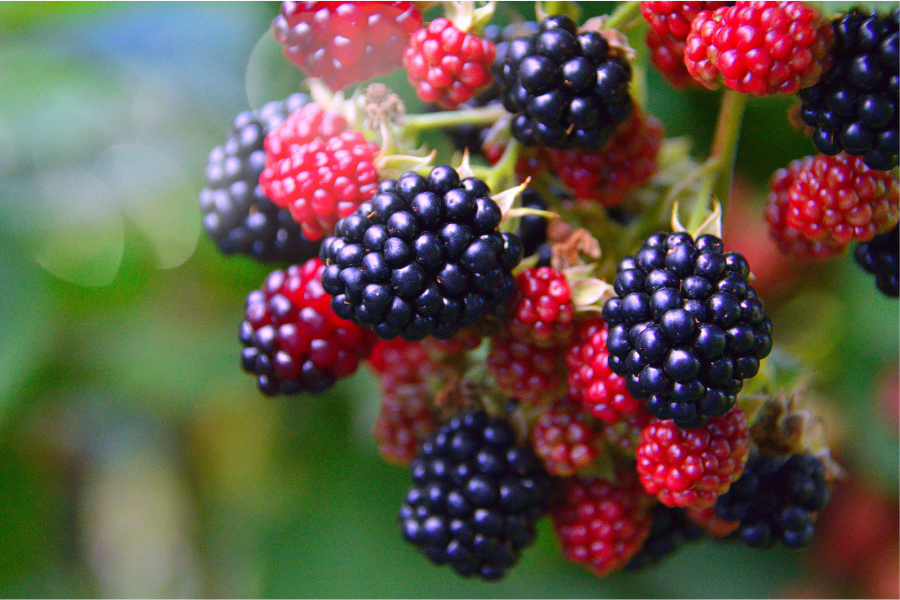
THE SWEETNESS OF THE UNDERWOOD ON YOUR BALCONY
Everything that is produced in our homes has an edge; starting a berry cultivation in our garden or on the balcony can taste different (and better) than those you buy at a high price in the supermarket.
Berries are certainly among the most popular, from adults to children: refreshing, greedy and even healthy! Rich in vitamin C, fiber and mineral salts, red fruits are also considered super foods, recommended for those suffering from diabetes, for their low sugar content, and for those with cardiovascular disorders, because they help strengthen and protect the heart. Also ideal for preparing desserts, creams and ice creams or for making salads and risottos.
"I don't have a garden, but my apartment has a fairly large terrace, can I still grow berries?" Of course yes!
Growing wild berries in pots and on your balcony is a good way to have a typically mountain product in the city always fresh and at very low cost. To transplant berries it is necessary to choose a large and deep container (no less than 50 cm to allow the roots to grow). It is also useful to keep the soil moist, favoring proper water drainage. Irrigation must be abundant during flowering; after harvesting it is instead necessary to reduce the amount of water. It should be known that the plants of the berries are particularly well in the semi-shaded areas, for this reason they grow very well in the undergrowth areas; It is also advisable to avoid areas that are too exposed to the wind and provide protection in case the winter season is particularly cold. The order of materials to be potted is as follows: 10 cm of draining material, 10 cm of soil and 10 cm of slow-release manure which will help the roots from the second year after planting, and other soil.
Which fruit are you particularly fond of? Take note and choose which one attracts you the most!
Raspberry: The raspberry plant should be planted between November and February in a fairly large pot; raspberries prefer a cool and moderately humid climate and therefore, for this reason, they must be positioned in partial shade positions. Irrigation must be constant but not excessive in order to avoid the onset of deleterious water stagnation.
Blackberry: Thornless blackberries offer abundant yields and beautiful, white or pink flowers. It is a plant that grows a lot, even three meters in the first year alone! To always have blackberries on your balcony, the ideal is to do this: every year you grow five new suckers (part of a plant in the form of a branch that grows directly on the trunk or at the foot of the tree, sometimes even directly from the root) and at the end of the year, cimateli at the height of the espalier, once the harvest is finished, cut the exhausted sucker at the base.
Blueberry: Small and very sweet fruits, characteristic of mountain areas, where they are found wild. It is a really interesting shrub to plant because it is resistant to frost and not very prone to diseases. The blueberry can also be grown on the balcony, in this case it is necessary to choose a pot with a good diameter, at least 30 centimeters, and a soil for acidophilic plants. It is necessary to wet the soil in pots often, in hot moments even daily, to prevent the earth from drying out.
Wild strawberry: The wild strawberry is present in different varieties. They all need water to grow and produce fruit. Water must also be given during the winter. It is a plant that does not need much maintenance, the only one is the dry cleaning, to be done very gently, cutting the dry leaves at the base. If your area in the winter is too cold, cover the wild strawberry with non-woven fabric and in the spring shake up the soil and add some manure.
Currant: The berries of the currant plant, gathered in clusters, can be bright red, white or black. Even if it loves the sun, the currant prefers areas characterized by intense cold winters and, at the same time, cannot bear hot and dry summers: the ideal period for transplanting therefore goes from October to April. Sturdy seedling, currant needs very little care.
Roll up your sleeves and start this cultivation of berries: all the patience and love you pour out towards these gems will be rewarded!


All comments